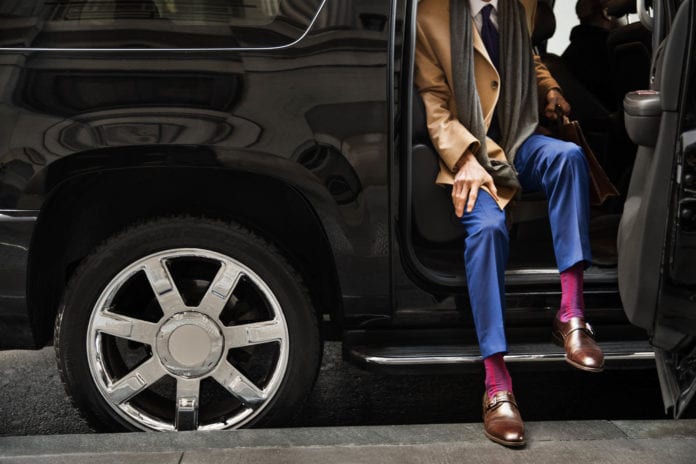Ride-hailing giant Lyft Inc. (Nasdaq: LYFT) announced Monday that it’s teaming up with California-based nonprofit health system Sutter Health. And one of the key aims of the partnership is to help Sutter’s home health employees with transportation to and from patients’ homes.
With Lyft as a resource, Sutter — a big home health organization in its own right — can likely rid itself of certain liability burdens that come with allowing workers to travel to and from case assignments in their personal vehicles. Additionally, with arranged travel, employees can strip themselves of the stress and excess time that previously went into finding their own way to a patient’s home.
Sutter serves more than 3 million northern Californians and employs 60,000 people. The health system makes over 200,000 home health visits per year across more than two dozen California counties, largely operating through its Sutter Care at Home service line.
The Sutter and Lyft partnership had been a work in progress, leaders from both sides told Home Health Care News. The two organizations had collaborated on a pilot project over the past few years, and that collaboration led them to think deeper about how ride-hailing services could benefit a health system that makes hundreds of thousands of in-home visits per year.
Sutter’s home health workers often tend to patients in need of wound care, physical therapy or nutritional support.
“Maximizing the time of those clinicians as they go about their day — either to allow them to prepare for the next visit or to document a visit that they’ve just left … is a huge benefit,” Megan Callahan, the VP of Lyft Healthcare, told HHCN.
For Sutter, Lyft controlling its employee transportation led to other ancillary benefits, too. For example, it leads to a safer visit process, Sutter’s chief innovation officer, Chris Waugh, told HHCN.
“That’s a bit of a breakthrough use case that we found,” Waugh said. “Our home health employees, if they are getting in their cars, they have to find a place to park. They have to make sure they’re at the right address … Sometimes, those environments aren’t safe. We’re finding with the Lyft partnership that those employees can get some of their time back — or at least have a less stressful ride to the next visit.”
After Lyft drops Sutter employees off at a patient home, it will also be there to pick them back up. So far, the only downside of the partnership is that employees have had to adjust to not leaving their lunches in the car, Waugh remarked.
One of the first times Lyft and Sutter worked together was in reaction to a fire in the northern California area a few years back. Within a day, an affected region was geo-fenced, and employees and patients within those boundaries were given access to rides, whether it was for work, an appointment or to get to the grocery store.
The innovative and curious nature of the partnership that sparked geo-fencing also provided them an ability to look deeper into the transportation problem in home health care.
“[The partnership] allows the clinicians to maximize their time and work at the top of their license,” Callahan said. “I think it’s a testament to Sutter’s dedication to make things easier for their staff, to then provide excellent care to their patients.”
Lyft is deeply embedded in the health care sector. Currently, it partners with nine out of the 10 largest health systems in the United States, according to Callahan.
In terms of home-based care, Lyft has been partnering with a myriad of companies over the past few years. 24 Hour Home Care, CareLinx and Comfort Keepers are just a few relationships Lyft has forged.
“Transportation is critical for all individuals, especially those who have mobility challenges, to stay in their homes as they age without being stuck at home because of a lack of options that meet their physical needs or budget,” Sherwin Sheik, founder of CareLinx, said in December 2016. “Our partnership with Lyft makes it easier for family members to organize transportation while supporting individuals with the caregiving they need to remain independent and still affordably get to where they need to go.”
Providing transportation services to seniors — specifically those who are Medicare Advantage beneficiaries — will be a driving force in Lyft’s health care business moving forward, Callahan said in August.
Lyft isn’t alone in its efforts to build out a health care department, as major competitor Uber Technologies Inc. (NYSE: UBER) has also actively targeted in-home care agencies with transportation, isolation and social determinants of health in mind.
Lyft had a natural advantage for connecting with Sutter, however.
“Lyft is literally down the street from us and there’s a lot of overlap between our interests,” Waugh said. “We weren’t limited to the obvious use case of [giving patients a ride home]. We started exploring other possibilities like the staff … we might have different demands at our surgery sites on any particular day, and an employee can walk out of their home, get a Lyft, and the Lyft will take them to wherever they’re needed that day with zero stress on the employee’s part.”




